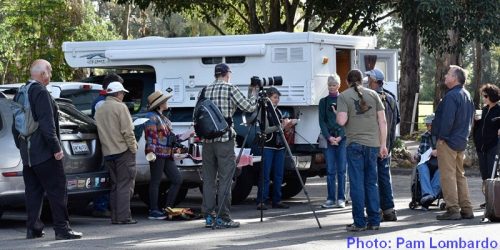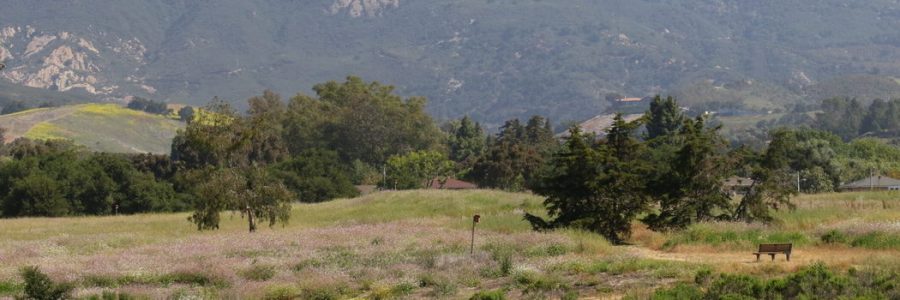
By Rebecca Coulter, Liz Muraoka, Joan Murdoch, & Libby Patten
[Editor’s note: This is the full article referred to on page 1 of El Tecolote March-May 2020.]
Let’s just get this on the table: North American birds are in trouble. In late January, Cornell Lab of Ornithology’s Dr. Kenneth Rosenberg spoke at the Museum of Natural History about the Decline of the North American Avifauna, his recent article and its message of three billion birds lost since 1970, which fell upon the national birding scene like a ton of bricks. As a community of birders and conservationists, we—like Rosenberg—have been astonished at the extremes evident in the data.
Just three weeks earlier, Fleischmann Auditorium was also filled to the brim with birders, but the mood was much more festive. The 120th CBC compilation dinner was the end of a planning cycle for organizers, and just the beginning of the number crunch for the compiling team. It was a time to come together as a community of people passionate about birds. Old friends were reunited, stories embellished, and new birders were enveloped in the glow of a room full of people talking about birding! The final species total of 203 was better than expected. Though there were no big surprises, there were highlights: the male Tufted Duck returned for a 7th year to Lauro Reservoir; Mountain Quail were found along Camino Cielo; three Greater Roadrunners were found; and the elusive but recently regular American Bittern was in its favorite spot at Lake Los Carneros. We counted eight owl species, including the uncommon Northern Pygmy, Burrowing, Short-eared, Spotted, and Northern Saw-whet. Missed last year, the Warbling Vireo returned for a seventh winter at Bohnett Park. (This species is so rare in winter that we presume it is the same individual favoring the same small park each year.) We had three swallow species: Northern Rough-winged, Tree, and Barn; two uncommon sapsuckers: Yellow-bellied and Red-naped; and a surprising Lawrence’s Goldfinch at Gibraltar Dam. Uncommon warblers were scarce this year, but we found multiples of Black-and-White, Nashville, Yellow, Black-throated Gray, and Wilson’s, plus one each of Lucy’s and Hermit. And for the 4th consecutive year, we added a new species to our CBC list: two immature Yellow-crowned Night-heron at Goleta Beach, a species that has been steadily expanding its westward range and is now becoming regular along the California coast.
Among the misses, there was a big gap in seabirds again, even though the weather cooperated, and thanks to our friends at Santa Barbara Channelkeeper, the boat crew traveled nearly 50 miles back and forth around the pelagic edge of the count circle. But Common Murre, Bonaparte’s Gull, Forster’s Tern and Caspian Tern were all missed, nor were they seen from shore. Other birds missed on count day but seen during count week were Common Gallinule, Red Crossbill, Hooded Oriole, and Black-headed Grosbeak. The day after count week ended, two Scott’s Oriole were found on blooming aloes in a private nursery near Parma Park.
As the results have unfolded during compiling, we found that some of the trends evident in Rosenberg’s message—in particular declining land bird species—were reflected in our numbers, as well. Among our low counts this year: California Quail, Mourning Dove, White-crowned Sparrow, and Yellow-rumped Warbler.
But there is some good news. Heermann’s Gull, Hairy Woodpecker, American Kestrel, Blue-gray Gnatcatcher, and Ruby-crowned Kinglet all showed higher counts compared to recent years. And while Northern Pintail continues its precipitous decline, Blue-winged Teal, a species we have often struggled to find, seems to be increasing here. For both Osprey and Peregrine Falcon, formerly on our “rarity” list requiring an observation write-up, multiples of each were seen. And we had a record high count of Chestnut-backed Chickadee, another species expanding its range into our coastal areas.
Often birding is about the simple joy of observation: seeing the flash of magenta on Anna’s Hummingbird when it turns toward the sun, or hearing the soft but distinctive chup-chup of a Hermit Thrush skulking in the shadows. Stepping up to record these observations in eBird for each outing in turn steps up our conservation efforts. Participating in the CBC and other citizen science projects is a key answer to “what can we do?” Cornell, the American Bird Conservancy, and other partners have outlined 7 Simple Actions that make a difference. And like many grassroots efforts, these small steps multiply to have a powerful impact on the mission: saving birds and the habitats that support them.
Thank you for your steadfast support of the CBC: Santa Barbara Audubon, the compiling team, mapping and data crunching experts, the compilation dinner crew, and all the birders who scout, organize, and inspire us to do it every year. Thank you.
State and national ranking for number of species below. The full list of species and numbers of birds recorded for each will be available soon at Audubon’s CBC web page.
# Species Count Circle
229 Matagorda/Mad Island Marsh, TX
212 San Diego, CA
203 Santa Barbara, CA
202 Guadalupe River Delta, TX
199 Morro Bay, CA
197 Freeport, TX

